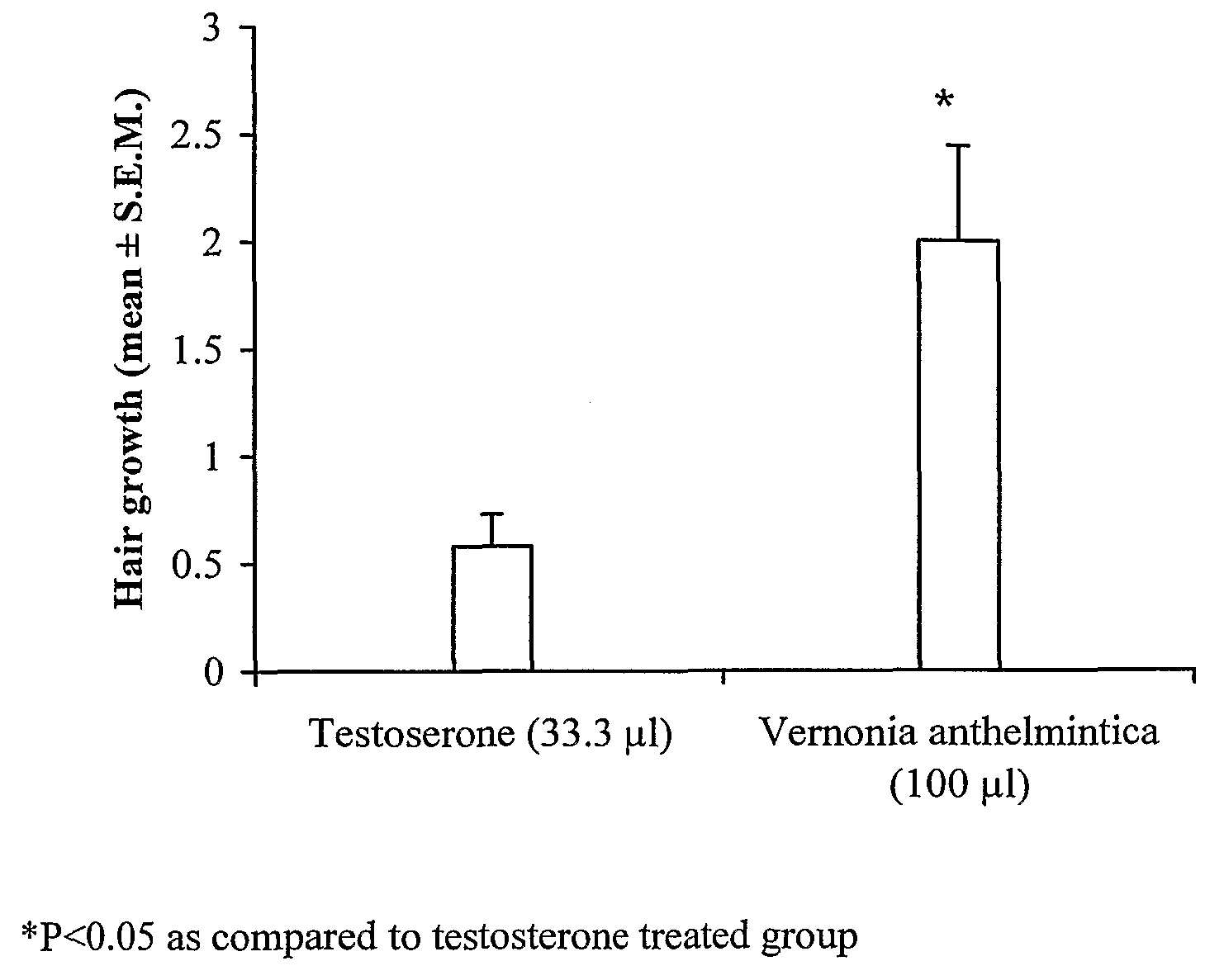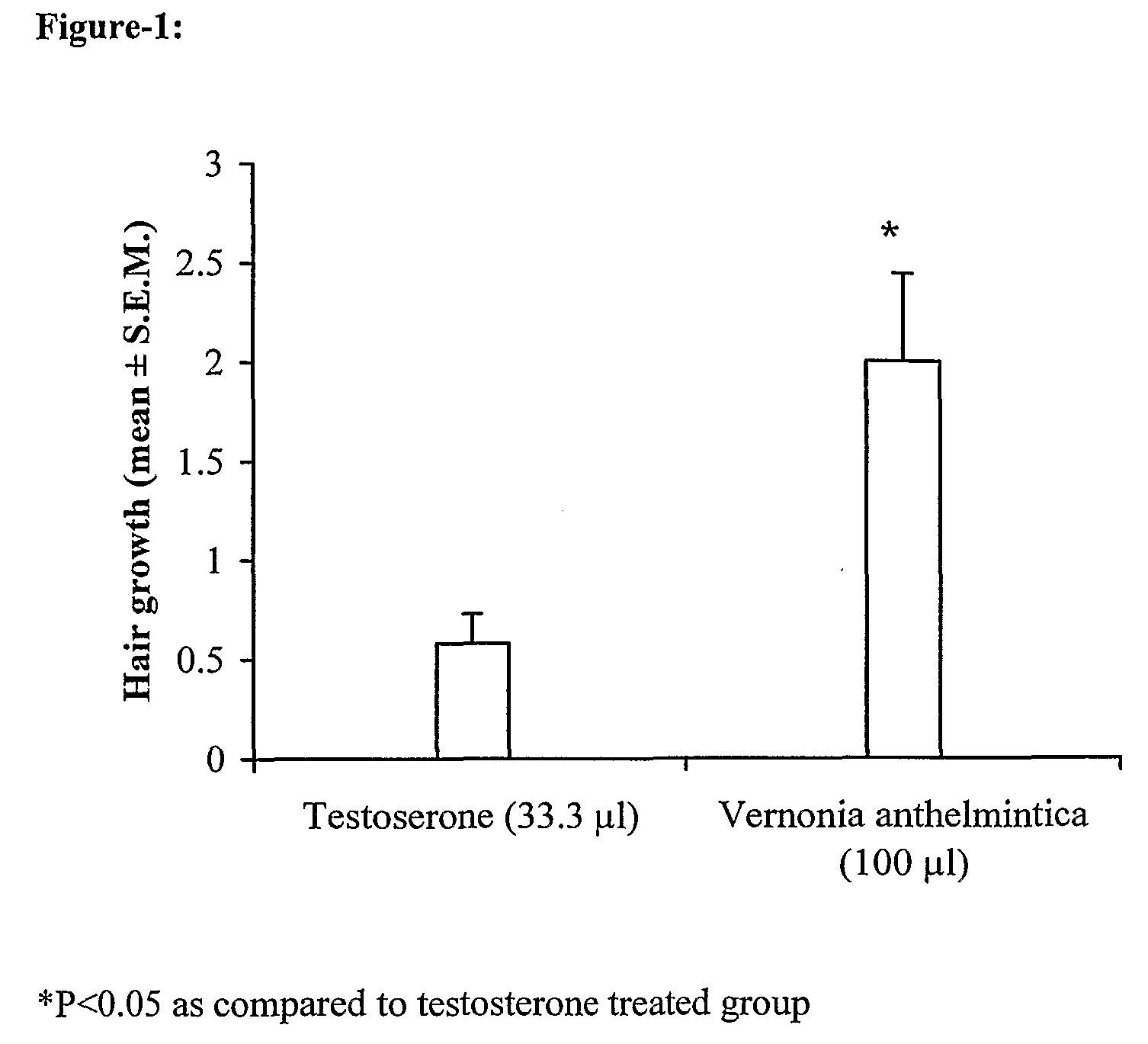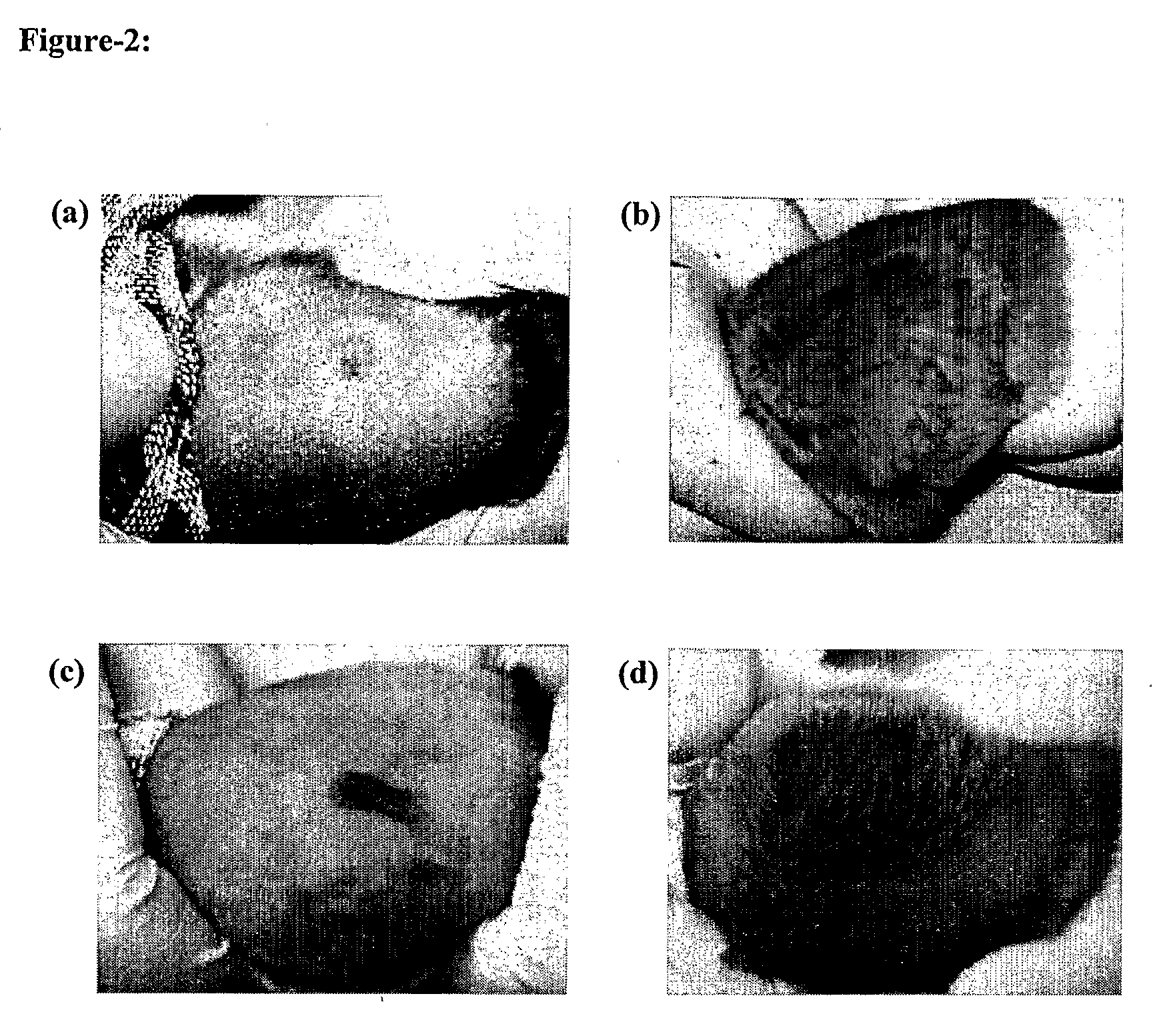Novel compositions for hair disorders and process of preparation thereof
a technology for hair disorders and compositions, applied in the field of new compositions for hair loss prevention and/or hair growth promotion, can solve the problems of hair loss in both men and women, hair loss in men, and men's loss much greater, so as to prevent testosterone-induced hair loss, reduce hair loss, and determine the strength of topical compositions
- Summary
- Abstract
- Description
- Claims
- Application Information
AI Technical Summary
Benefits of technology
Problems solved by technology
Method used
Image
Examples
example-1
[0080]The preparation of extract for hair loss prevention and / or hair growth promotion from the plant Vernonia sp. comprises of the following steps:
[0081]1. 2 kg of dried and powdered plant is added to 5 L of Chloroform in a flask.
[0082]2. The mixture is boiled under a reflux condenser for 1 hour.
[0083]3. The mixture is cooled and filtered. The filtrate is set aside.
[0084]4. Steps 1 to 3 are repeated with the residue three times more.
[0085]5. The pooled filtrates are distilled to remove hexane.
example-2
[0086]The preparation of extract for hair loss prevention and / or hair growth promotion from the plant Vernonia sp. comprises of the following steps:
[0087]1. 1 kg of dried and powdered leaves is added to 6 L of Hexane in a flask.
[0088]2. The mixture is boiled under a reflux condenser for 1 hour.
[0089]3. The mixture is cooled and filtered. The filtrate is set aside.
[0090]4. Steps 1 to 3 are repeated with the residue three times more.
[0091]5. The pooled filtrates are distilled to remove hexane.
[0092]6. The hexane extract is stirred with 500 ml 95% ethanol for 30 minutes.
[0093]7. The ethanolic mixture is filtered. The filtrate is set aside.
[0094]8. Steps 6 and 7 are repeated with the residue.
[0095]9. The pooled ethanolic extracts are distilled to remove ethanol
example-3
[0096]The preparation of extract for hair loss prevention and / or hair growth promotion from the plant Vernonia sp. comprises of the following steps:
[0097]1. 2 kg of dried and powdered plant is added to 5 L of water.
[0098]2. The mixture is boiled under a reflux condenser for 1 hour.
[0099]3. The mixture is cooled and filtered. The filtrate is set aside.
[0100]4. Steps 1 to 3 are repeated with the residue once more.
[0101]5. Pooled filtrates are concentrated and spray dried.
PUM
 Login to View More
Login to View More Abstract
Description
Claims
Application Information
 Login to View More
Login to View More - R&D
- Intellectual Property
- Life Sciences
- Materials
- Tech Scout
- Unparalleled Data Quality
- Higher Quality Content
- 60% Fewer Hallucinations
Browse by: Latest US Patents, China's latest patents, Technical Efficacy Thesaurus, Application Domain, Technology Topic, Popular Technical Reports.
© 2025 PatSnap. All rights reserved.Legal|Privacy policy|Modern Slavery Act Transparency Statement|Sitemap|About US| Contact US: help@patsnap.com



